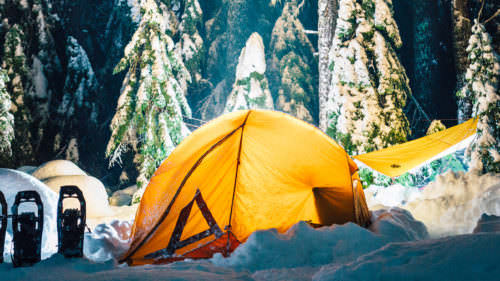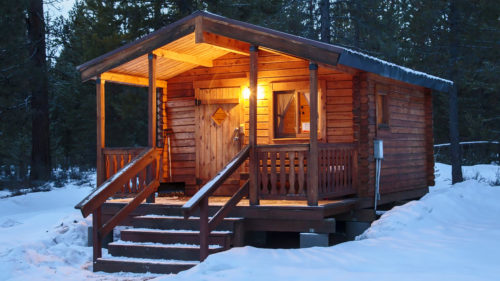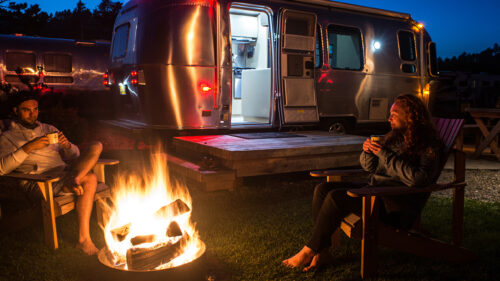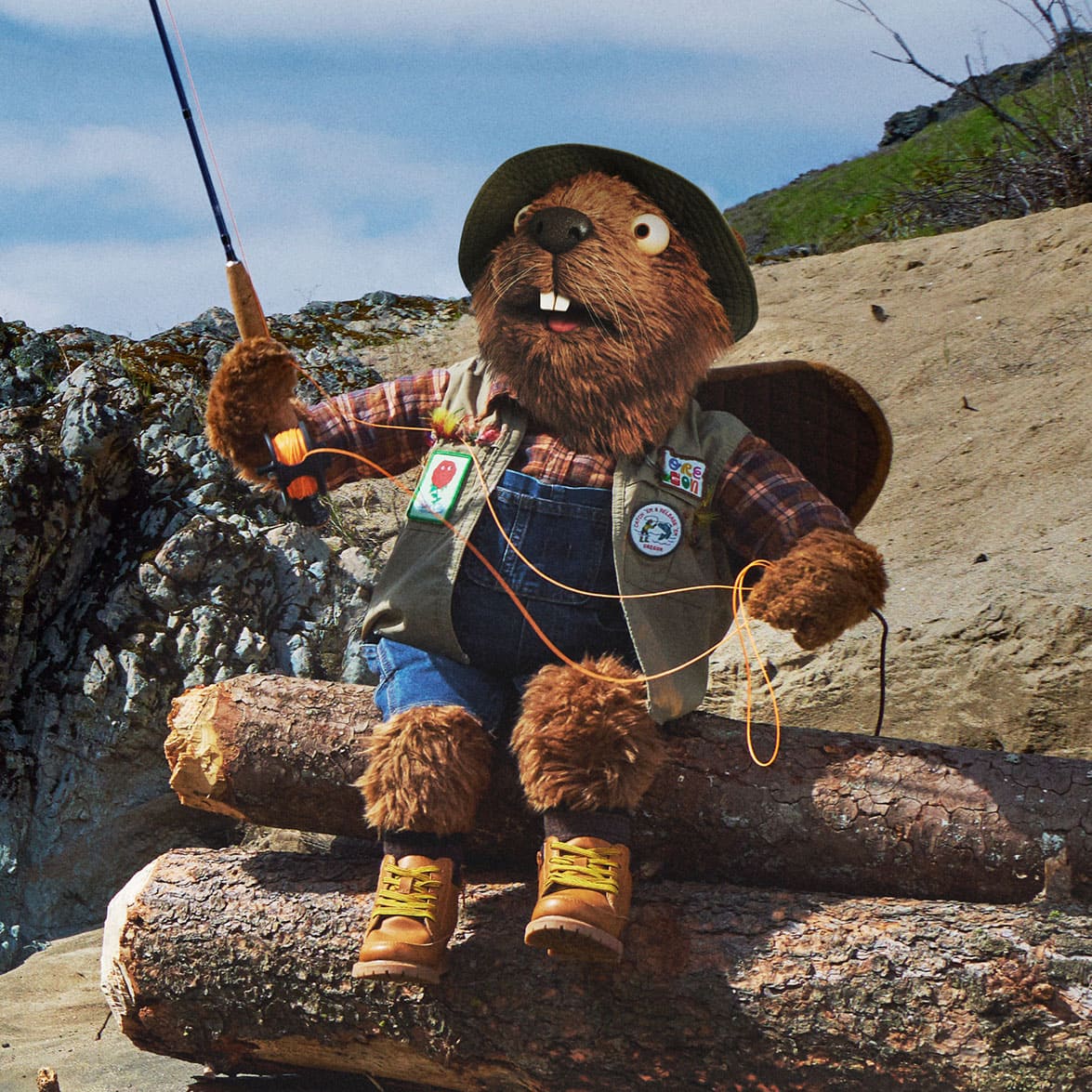As my partner and I greeted an early-December morning in the snug confines of our cabin at L.L. Stub Stewart State Park, we had anticipated a day filled with outdoor adventures. The surprise that awaited us was beyond our expectations, however — a world outside transformed into a serene white landscape reminiscent of a Robert Frost poem. Instead of our planned hike, we found ourselves sauntering throughout the park, reveling in the pristine beauty of the freshly fallen snow. That magical winter weekend nearly a decade ago ignited our passion for winter glamping in Oregon’s state parks.
While many choose to hunker down at home or bask in the warmth of a fireplace during winter, Oregon State Park cabins and yurts offer a welcoming alternative. With greater availability and the comfort of heating and electricity, these accommodations provide a safe and welcoming way to experience the natural world during a different season. Here are our top recommendations for immersing yourself in the state’s winter landscapes while staying in an Oregon State Park cabin or yurt.
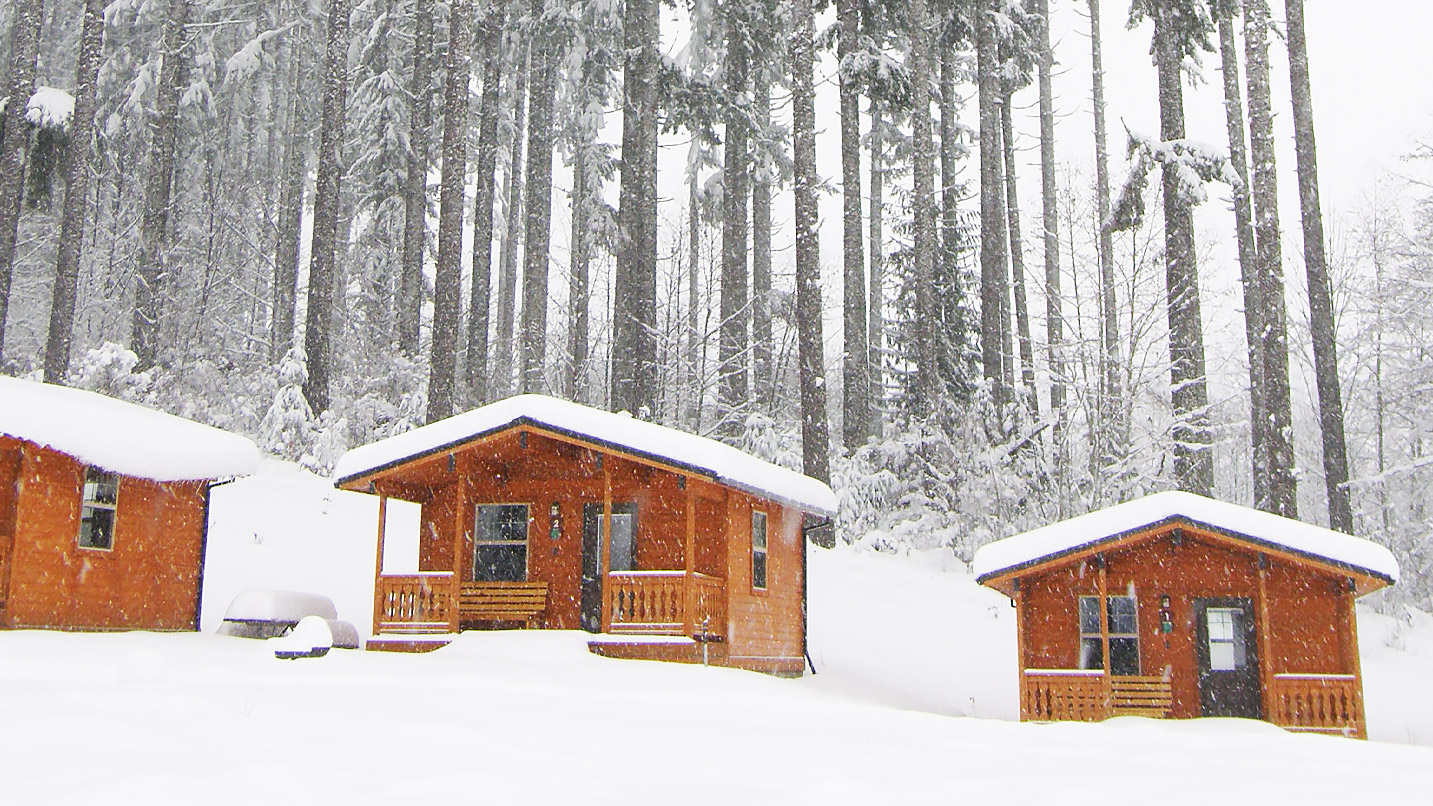
1. Hiking and Snowshoeing Base Camp Near Portland
Just west of the Portland metropolitan area, about a half-hour’s drive, sits Stub Stewart, the idyllic park that fueled our glamping passion. With 15 ADA-accessible, heated cabins — including five that are pet-friendly — there are a number of comfortable options to call home for the weekend. The 1,800-acre park is nestled in the forests on the eastern flanks of the Coastal Range near the town of Vernonia, and it offers more than 30 miles of forested trails for hiking and biking.
In winter months, when the valley is receiving rain, the park’s slightly higher elevation often brings snow instead. When it does, grab your snowshoes or cross-country skis and head out on the Banks-Vernonia State Trail to ski across the impressive Buxton Trestle, a former railroad span that tops out at nearly 85 feet above the ground and stretches 700 feet across Mendenhall Creek. Cabins can be reserved up to six months in advance.
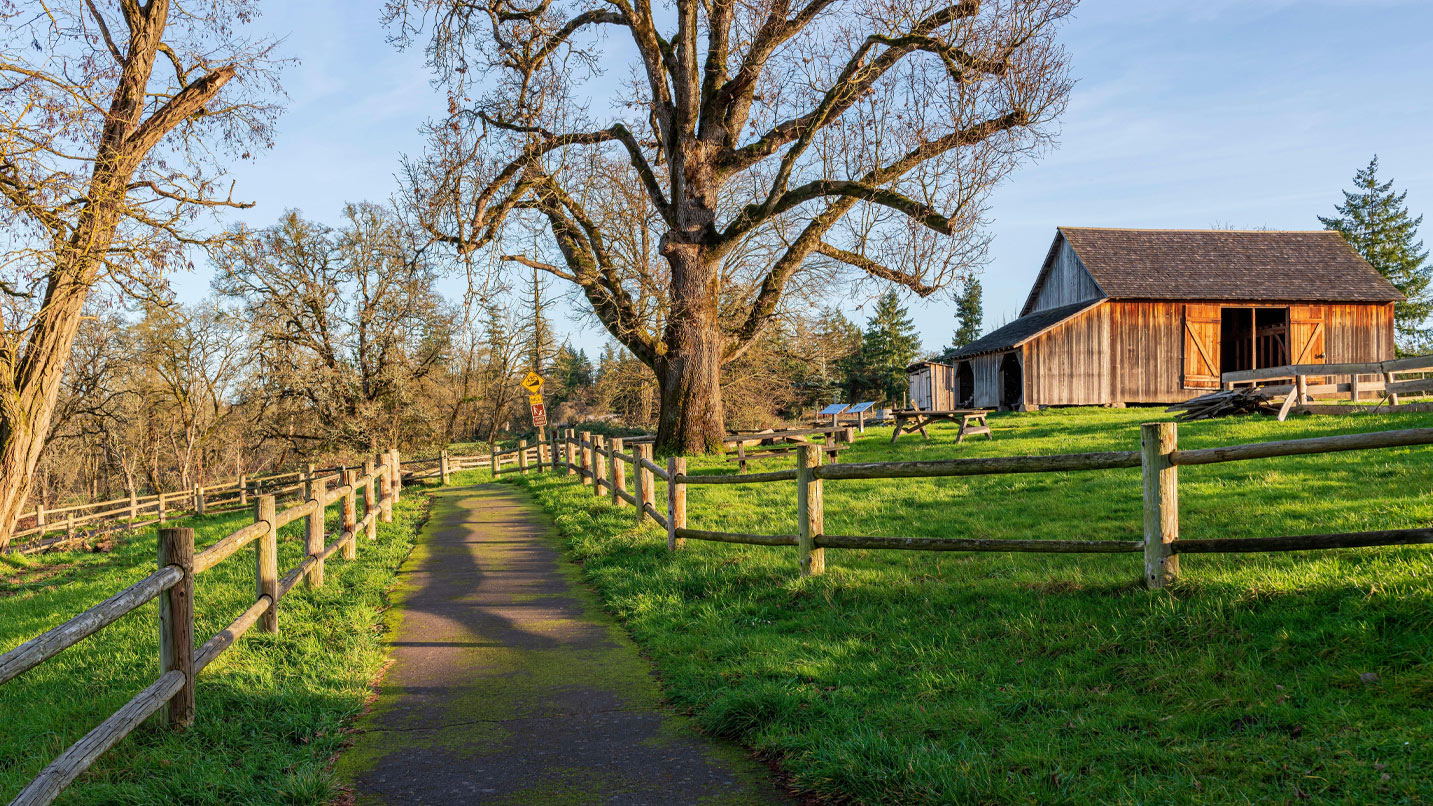
2. History and Nature in the Heart of the Willamette Valley
Let’s be honest — tent camping in wet weather isn’t the best experience. But playing in the rain when you have a cozy cabin to come back to can be downright fun. Situated halfway between Salem and Portland in the heart of the Willamette Valley, Champoeg State Heritage Area is rich in both beauty and history. A quick detour off Interstate 5 — easy driving on a winter day — the park sits along a scenic stretch of the Willamette River that was the site of the area’s first government center. Explore some of the park’s historic buildings or travel the popular 4-mile paved trail for bird and wildlife viewing. The trail leads to the historic town of Butteville, which features the historic Butteville Store (closed in January). Warm up upon your return with s’mores and hot drinks at the fire rings available beside the park’s six ADA-accessible cabins. All are open and reservable year-round; pets are welcome at three of them. More cabins are planned for the future.
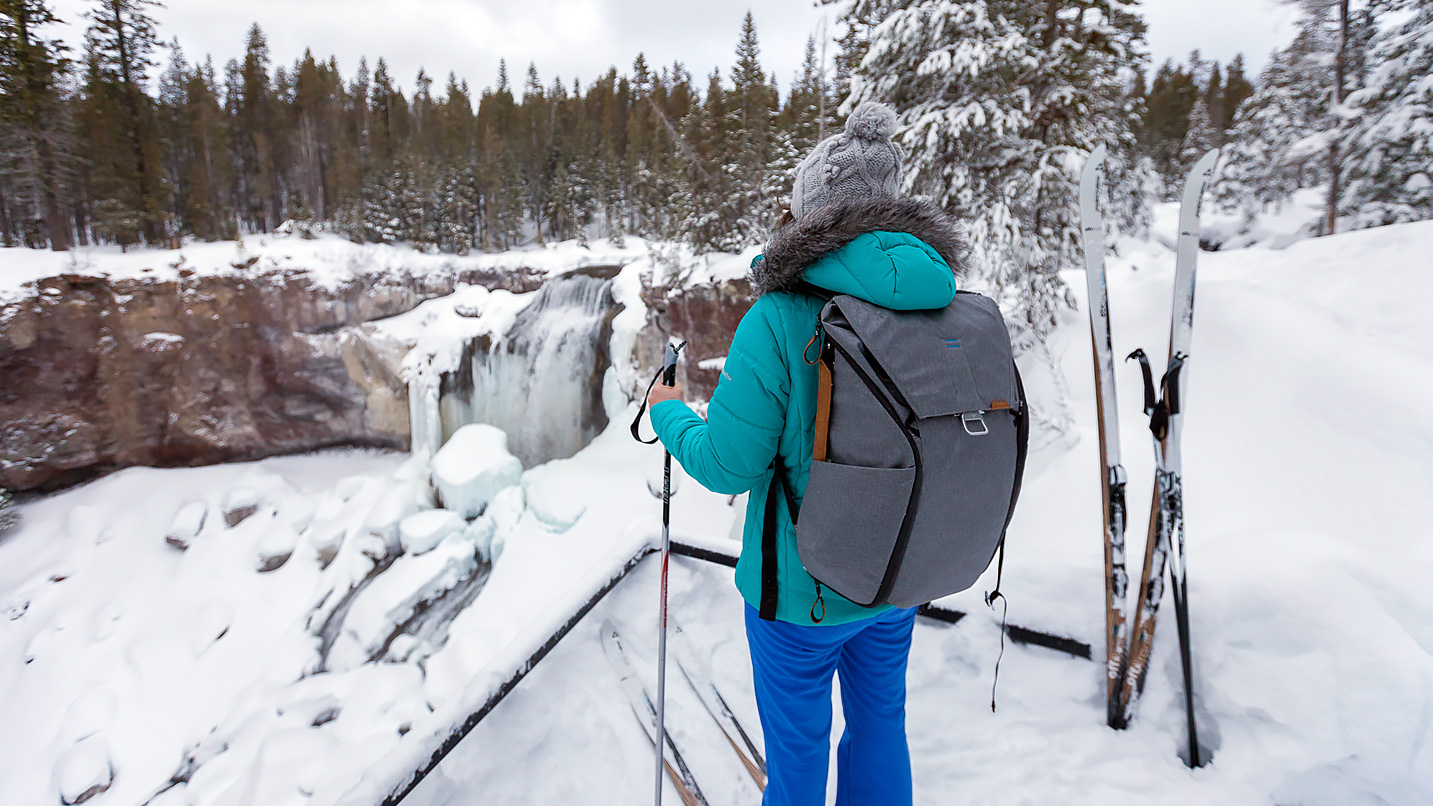
3. Launch Pad for Skiing and Snowshoeing in Central Oregon
Approximately 27 miles southwest of Bend is LaPine State Park. Popular with anglers, floaters and hikers in summertime, the park turns quiet and peaceful in winter and is a perfect escape for those wishing to visit Central Oregon in the quieter season. Mt. Bachelor Ski Resort is a 30-mile drive from the park and opportunities to snowshoe near Newberry National Volcanic Monument in the Deschutes National Forest is even closer. The park itself offers 14 miles of trails, and visitors can cross-country ski or snowshoe in to see the “Big Tree,” Oregon’s largest ponderosa pine tree, estimated to be nearly 500 years old.
All of the park’s 10 cabins are available year-round and are located within a stone’s throw of the tranquil, meandering Deschutes River. For those wanting to truly experience the pamper of glamping in the wilderness, choose one of the five deluxe cabins, which include a kitchen, a bathroom and a shower.
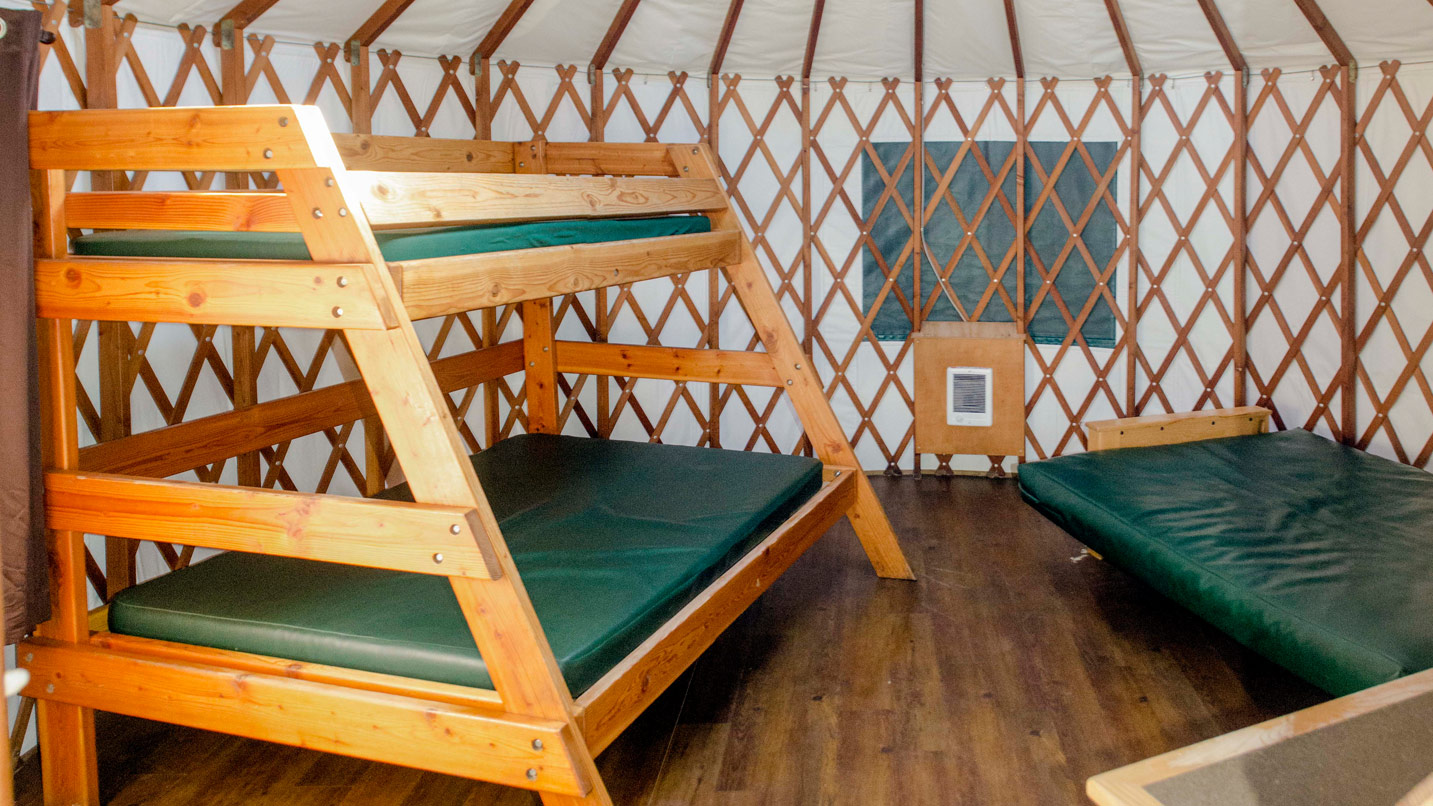
4. Warm Winter Temperatures and River Hikes in Southern Oregon
Many know Oregon’s Rogue Valley for the Wild and Scenic Rogue River that runs through it, but the little-known secret is that the area offers mild and pleasant temperatures over the winter months. With averages in the mid- to high 50s in January and February, the protected valley is a perfect destination for an easy getaway. The Valley of the Rogue State Park is also conveniently located right off Interstate 5 between Grants Pass and Medford, making it an ideal central spot for day trips out to Crater Lake National Park, Ashland or the historic town of Jacksonville.
For those preferring to relax on-site, the park itself has a lot to offer, from hiking trails along the Rogue River to the paved, nearly 8-mile Rogue River Greenway Trail, which runs through the park and back to the small town bearing the river’s name. Choose to wind down your day at one of the park’s 13 reservable yurts.
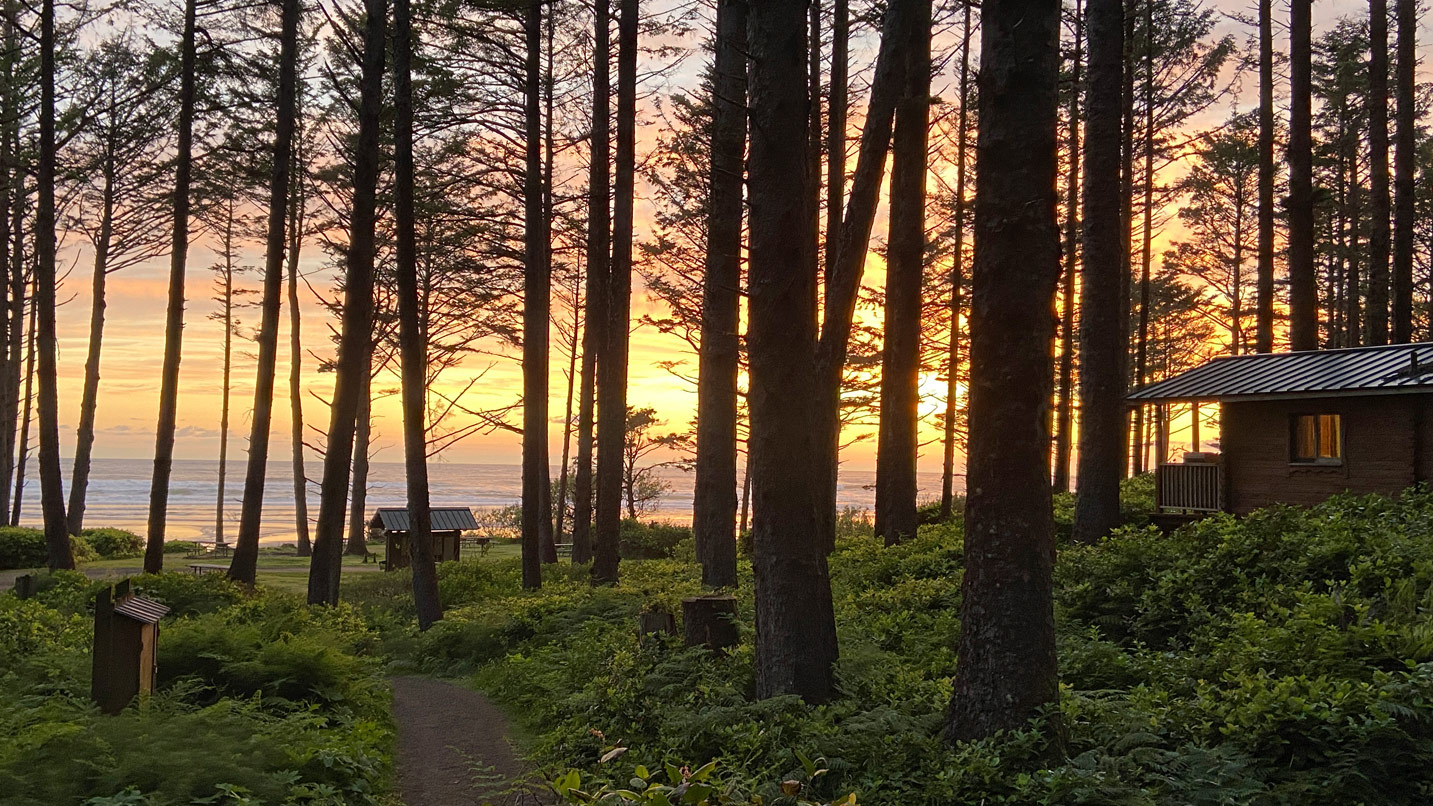
5. Beachcombing and Fat-Tire Biking on the Oregon Coast
There’s a magic about the Oregon Coast, especially in wintertime. The foggy sky intermixed with ocean waves and low-hanging sun can make for spectacular vistas. Though you should always be prepared for rain, it’s most often intermittent with pockets of dry weather in between — still offering plenty of opportunities to soak in nature.
Cape Lookout State Park is a prime spot for coastal adventures. Located southwest of Tillamook, the park has miles of sandy beaches perfect for beachcombing, walking and fat biking, and the Oregon Coast Trail can be accessed from both ends of the park, offering up spectacular cliffside views above the ocean. Outside the park, the Cape Meares State Scenic Viewpoint is home to hiking trails, the largest Sitka spruce tree in the state and the historic Cape Meares Lighthouse, which is open for tours year-round.
Kick up your feet back at camp in one of the 13 yurts or six deluxe cabins — about half of which are pet-friendly — which have kitchens, bathrooms and hot showers. One cabin and two yurts are accessible to campers with disabilities.
If You Go:
- Be prepared for snow in the winter months and winter driving conditions throughout the parks and surrounding areas. Equip your car for winter weather and drive cautiously, especially on icy roads and bridges.
- Visit TripCheck for weather conditions and road status, and read all about winter safety in Oregon before your trip.
- Be sure to dress warmly, pack your Ten Essentials and charge your phone ahead of time.
